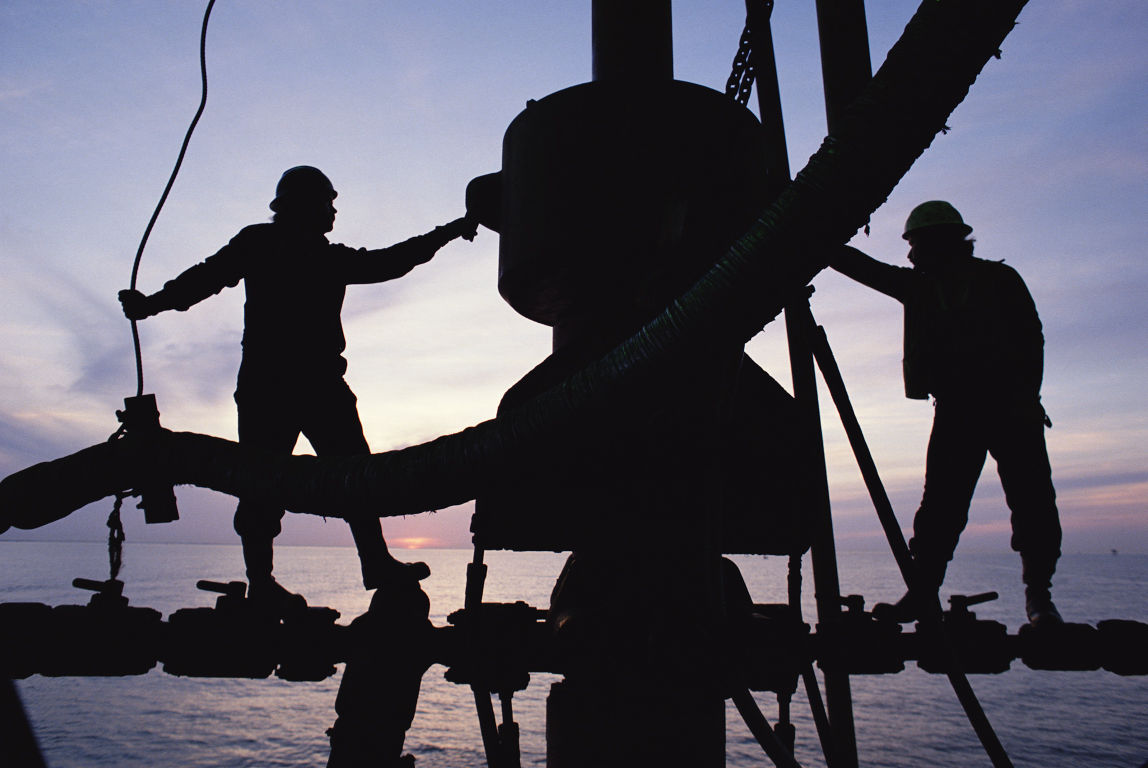
Axman tabbed as Nicholls’ part-time football coach post-Stubbs
September 25, 2014
Despite global unrest, gas prices favor area’s consumers
September 25, 2014In the aftermath of the Deepwater Horizon oil spill of 2010, many wondered if the glory days of the oil and gas industry had come and gone.
Fast-forward four years, and those concerns have turned into unbridled jubilation for how the industry has recovered, and then some, from the worst environmental disaster of our lifetime.
The most obvious indication of the booming industry is the increased rig count in the Gulf of Mexico from 33 before the spill to up over 40 and growing. But that just scratches the surface of why those involved in oil and gas industry are jumping for joy at potential future gains.
“The future could be bright. The state of Louisiana produces or transports 30 percent of the oil and gas that our nation utilizes either through production, refining, our pipelines, highway infrastructure, or our rivers and waterways,” Louisiana Oil & Gas Association President Don Briggs said.
And thanks to a constitutional agreement passed by the Mexican government, American private oil companies can now start drilling in more areas within the Gulf of Mexico.
“[Mexico] has signed an agreement with the United States called the Transboundary Hydrocarbons Agreement, which basically means there are two what I call doughnuts in the middle of the Gulf of Mexico where our respective boundaries cross, and they’ve just been sitting there fallowed,” economic consultant Dr. Loren Scott said. “Nobody had the right to drill in them, and now there’s going to be agreements on drilling there, which is going to create all kinds of business for people like Halliburton and other service fabricators.”
This and many other factors are causing industrial areas such as Port Fourchon to be “expanding like crazy,” according to Scott.
“They’re developing new slips down there, some of which are leased up before they’re even built,” Scott said. “Those are very good indications, and then outfits like Danos and Halliburton and Schlumberger and others are building new facilities down there to service the offshore oil and gas industry. Edison Chouest is adding more and more people at their new ships facility, so these are all signals that it is not only great, but my guess is it’s only going to get better.”
And that’s just on the oil side of things.
As for natural gas, Louisiana Mid-Continent Oil and Gas Association President Chris John said Louisiana is looking at between $60 and $100 billion of investments in the petrochemical and natural gas export sectors due to hydraulic fracturing and competitive natural gas prices.
“[The industry] is very bullish and will continue to grow as the downstream refining and chemicals come on line,” John said.
According to Briggs, just in the Haynesville Shale alone – one of three major shales in the state of Louisiana – there are 2,642 producing wells. He said 258 are in pre-production waiting on operations and 21 are in the process of drilling. Of the 21 currently drilling, each produces about 180 jobs, and during the peak of production about 139 rigs were running.
“Between 2008-10, operations in the Haynesville Shale have generated approximately $40 billion in direct and indirect economic growth,” Briggs said. “Over that time period, the Haynesville has supported over 100,000 jobs and provided Louisiana with over $1.3 billion in local and state tax revenue. In 2009 alone, the extraction activities in the Haynesville generated approximately $10.6 billion in new business sales and nearly $5.7 billion in household earnings within Louisiana. From 2010 to 2014 companies operating in the Haynesville will spend nearly $25.8 billion in drilling expenditures, $57.5 million in estimated lease payments, and will allocate approximately $672 million in royalty payments.”
Scott added that the low price of natural gas is creating a tremendous industrial boom in places along the Mississippi River between Baton Rouge and New Orleans as well as in Lake Charles.
“On natural gas, the key story is that there is an ocean of it now in the United States,” Scott said. “ … A lot of chemical companies are announcing major expansions because the price of their key product is low and the price of the product is still very high in Europe which is a big chemical manufacturing market. The United States is just kicking Europe’s butt in the world chemical market right now, so there’s a lot of investor announcements which by the way is also going to be good for some of your fabricators down there [in the Bayou Region].”
Although excitement regarding the oil and gas industry as well as its potential years down the road is abundant, various lawsuits and environmental concerns continue to serve as speed bumps to the industry’s development.
“Due to lawsuits like the South Louisiana Flood Protection Authority-East, Coastal and legacy lawsuits, our industry investment dollars are being sent elsewhere around the nation,” John said.
The fight against fracking is also something the industry will need to deal with as years go on, but industry leaders are confident they can continue harvesting the fruits of the earth in an environmentally-friendly way, and oh by the way, make a lot of money for southeast Louisiana and the state as a whole in the process.









